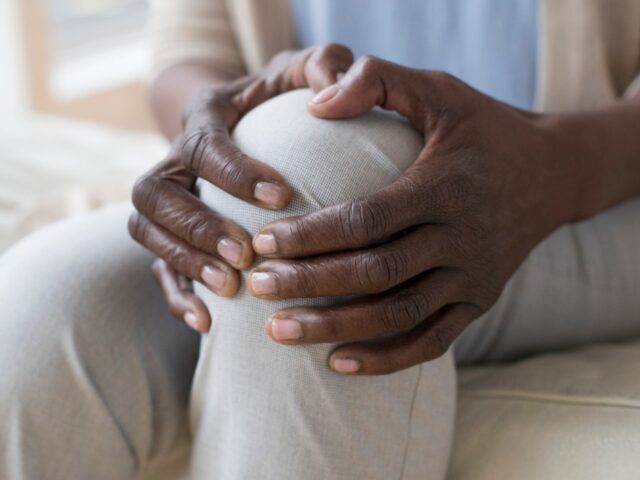
Understanding Rheumatoid Arthritis
Rheumatoid arthritis affects approximately 1% of the global population, with women being more likely to develop the condition than men. The exact cause of RA is unknown, but genetic, environmental, and hormonal factors are believed to contribute to its development. The primary symptoms of RA include joint pain, stiffness, swelling, and decreased range of motion, which can severely impact a person’s quality of life.
The Importance of Physical Therapy in RA Management
Physical therapy is a cornerstone in the management of rheumatoid arthritis. It helps to alleviate pain, reduce inflammation, improve joint function, and enhance overall physical fitness. The primary goals of physical therapy for RA patients are to maintain joint mobility, strengthen muscles around the joints, and prevent joint deformities. By incorporating physical therapy into the treatment plan, patients can achieve a better quality of life and potentially reduce their dependence on medications.
Benefits of Physical Therapy for RA Patients
- Pain Management: Physical therapists use various techniques such as heat and cold therapy, electrical stimulation, and manual therapy to help manage pain and reduce inflammation.
- Improved Joint Function: Through targeted exercises and stretches, physical therapy helps to improve joint mobility and flexibility, making daily activities easier and less painful.
- Muscle Strengthening: Strengthening the muscles around the affected joints helps to provide better support and stability, reducing the risk of joint damage and deformities.
- Enhanced Endurance and Cardiovascular Health: Physical therapists often incorporate aerobic exercises into the treatment plan to improve cardiovascular health and overall endurance, which can be particularly beneficial for RA patients who may be less active due to joint pain.
- Education and Self-Management: Physical therapists educate patients about their condition and teach them how to manage symptoms through proper body mechanics, posture, and joint protection techniques.
Common Physical Therapy Techniques for RA
- Range-of-Motion Exercises: These exercises help to maintain joint flexibility and reduce stiffness. Examples include gentle stretching and controlled movements of the affected joints.
- Strengthening Exercises: Resistance training using weights, resistance bands, or body weight helps to strengthen the muscles surrounding the joints, providing better support and stability.
- Aerobic Exercises: Low-impact aerobic activities such as walking, swimming, and cycling improve cardiovascular health and overall endurance without putting excessive stress on the joints.
- Hydrotherapy: Exercising in warm water reduces the weight-bearing load on the joints, making movements easier and less painful. The warmth of the water also helps to relax muscles and reduce stiffness.
- Manual Therapy: Hands-on techniques performed by the physical therapist, such as massage and joint mobilization, can help to reduce pain, improve joint function, and enhance circulation.
- Modalities: Physical therapists may use various modalities such as ultrasound, electrical stimulation, and heat or cold therapy to help reduce pain and inflammation.
Developing a Personalized Physical Therapy Plan
Each rheumatoid arthritis patient is unique, and a personalized physical therapy plan is essential to address individual needs and goals. The physical therapist will conduct a thorough assessment, considering factors such as the severity of the condition, the specific joints affected, the patient’s overall health, and lifestyle. Based on this assessment, the therapist will develop a tailored treatment plan that may include a combination of the techniques mentioned above. For easy-to-understand, in-depth information about the role of physical therapy in rheumatoid arthritis management, check out rheumatoid arthritis treatment singapore to learn more.
The Role of Physical Therapy in Preventing Joint Deformities
One of the significant concerns in rheumatoid arthritis management is the prevention of joint deformities. Joint deformities occur when the disease progresses and causes damage to the joint structures, leading to permanent changes in the joint’s shape and function. Physical therapy plays a crucial role in preventing these deformities through:
- Early Intervention: Starting physical therapy early in the disease process can help to maintain joint function and prevent irreversible damage.
- Regular Monitoring: Physical therapists regularly monitor the patient’s progress and adjust the treatment plan as needed to address any changes in the condition.
- Education on Joint Protection: Teaching patients how to protect their joints during daily activities and avoid unnecessary stress on the affected joints can help to prevent deformities.

Integrating Physical Therapy with Other Treatments
While physical therapy is a vital component of rheumatoid arthritis management, it is most effective when integrated with other treatments. A comprehensive treatment plan for RA may include:
- Medications: Disease-modifying antirheumatic drugs (DMARDs), biologics, and nonsteroidal anti-inflammatory drugs (NSAIDs) are commonly prescribed to reduce inflammation and slow disease progression.
- Lifestyle Modifications: Maintaining a healthy weight, eating a balanced diet, and avoiding activities that exacerbate joint pain are essential lifestyle modifications for RA patients.
- Surgery: In severe cases where joint damage is extensive, surgical interventions such as joint replacement or synovectomy may be necessary.
- Complementary Therapies: Techniques such as acupuncture, chiropractic care, and massage therapy can be beneficial when used alongside conventional treatments.
The Future of Physical Therapy in RA Management
Advancements in physical therapy techniques and a better understanding of rheumatoid arthritis continue to enhance the effectiveness of physical therapy in RA management. Research is ongoing to develop new and improved methods for pain relief, joint protection, and overall physical function. The integration of technology, such as telehealth and virtual physical therapy sessions, is also expanding access to physical therapy services, making it easier for RA patients to receive the care they need.
Conclusion
Physical therapy plays an indispensable role in the management of rheumatoid arthritis. By addressing pain, improving joint function, strengthening muscles, and educating patients, physical therapy helps to enhance the quality of life for those living with RA. A personalized and comprehensive treatment plan that includes physical therapy, medication, lifestyle modifications, and other therapies offers the best approach to managing this chronic condition. If you or a loved one is affected by rheumatoid arthritis, consider consulting a physical therapist to explore the benefits of a tailored physical therapy program.
